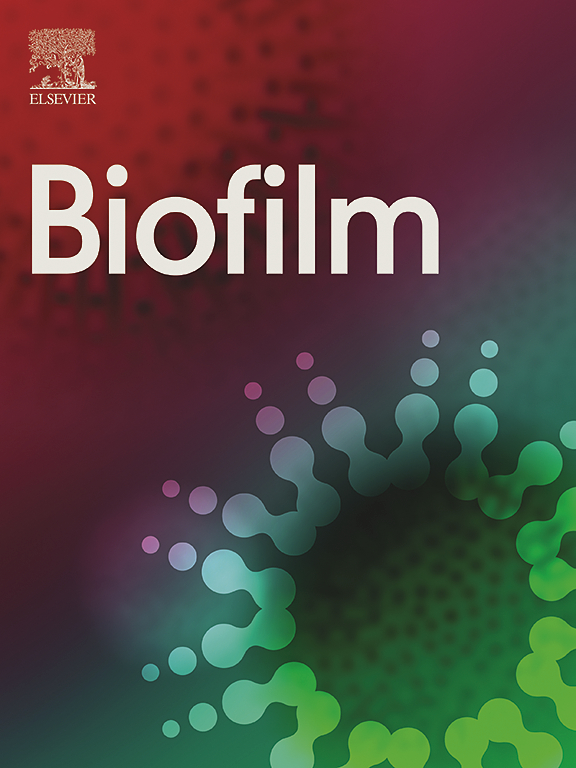The burden of antimicrobial resistance in biofilm forming Staphylococcus spp. from Vernal Keratoconjunctivitis patients eyes
IF 4.9
Q1 MICROBIOLOGY
引用次数: 0
Abstract
Vernal keratoconjunctivitis (VKC) is a chronic allergic ocular surface disease with seasonal recurrences and severe forms showing vision threatening complications. The purpose of the study is to understand the prevalence and diversity of biofilm-forming bacteria and antimicrobial resistance in VKC compared to healthy individuals (HC). For this, conjunctival swab samples were collected from VKC (n = 26) and HC (n = 23), of which culture positive samples were 77 % and 78.26 % respectively. The 16S rRNA gene sequencing revealed a significant increase in bacterial diversity in VKC compared to HC (p < 0.05), identifying 16 and 9 bacterial species, respectively. Staphylococcus epidermidis emerged as the predominant bacterium in both groups, with relative abundances of 52.8 % in HC and 30.2 % in VKC (p < 0.001). Biofilm formation was observed in 64.15 % of bacterial species in VKC and 31 % in HC (p < 0.001). Scanning electron microscopy analysis confirmed temporal biofilm formation by Staphylococcus spp. in both groups. Minimum inhibitory concentration testing showed that biofilm forming Staphylococcus spp. from VKC exhibited multidrug resistance (>2 antibiotics) more frequently than those from HC. Additionally, Staphylococcus spp. in VKC demonstrated higher resistance to fluoroquinolones compared to HC. These findings indicate a significantly greater prevalence of biofilm-forming and antimicrobial resistant Staphylococcus bacteria in VKC Patients compared with HC.
春性角膜结膜炎患者眼部生物膜形成葡萄球菌的耐药性负担
春性角膜结膜炎(VKC)是一种慢性过敏性眼表疾病,季节性复发,严重形式表现为威胁视力的并发症。本研究的目的是了解与健康个体(HC)相比,VKC中生物膜形成细菌的患病率和多样性以及抗菌素耐药性。为此,收集VKC (n = 26)和HC (n = 23)结膜拭子样本,其中培养阳性样本分别为77%和78.26%。16S rRNA基因测序显示,与HC相比,VKC中细菌多样性显著增加(p <;0.05),分别鉴定出16种和9种细菌。表皮葡萄球菌在两组中均为优势菌,在HC和VKC中相对丰度分别为52.8%和30.2% (p <;0.001)。64.15%的VKC细菌和31%的HC细菌形成生物膜(p <;0.001)。扫描电镜分析证实两组均有葡萄球菌形成的时间生物膜。最低抑菌浓度试验表明,VKC产生物膜葡萄球菌比HC产多药耐药(2种抗生素)的频率更高。此外,与HC相比,VKC中的葡萄球菌对氟喹诺酮类药物具有更高的耐药性。这些发现表明,与HC相比,VKC患者中生物膜形成和抗微生物葡萄球菌的患病率明显更高。
本文章由计算机程序翻译,如有差异,请以英文原文为准。
求助全文
约1分钟内获得全文
求助全文

 求助内容:
求助内容: 应助结果提醒方式:
应助结果提醒方式:


